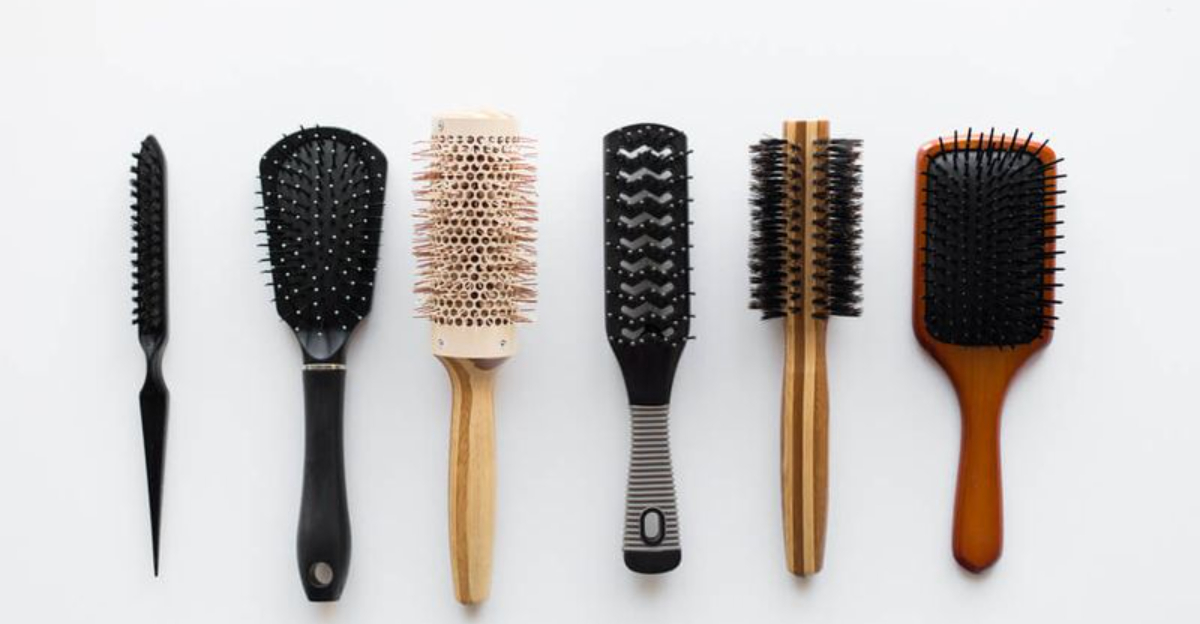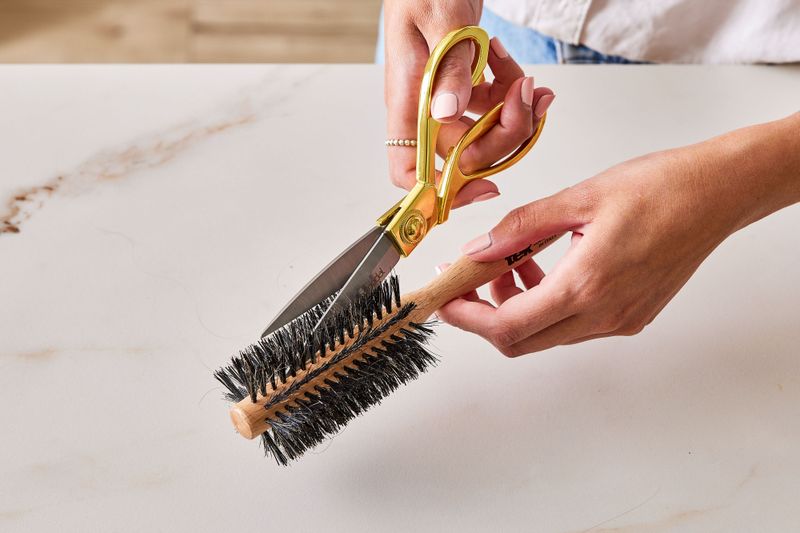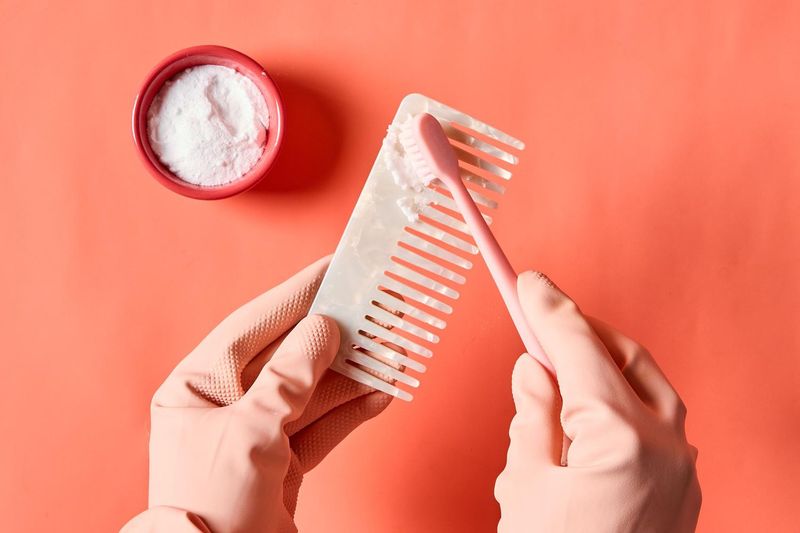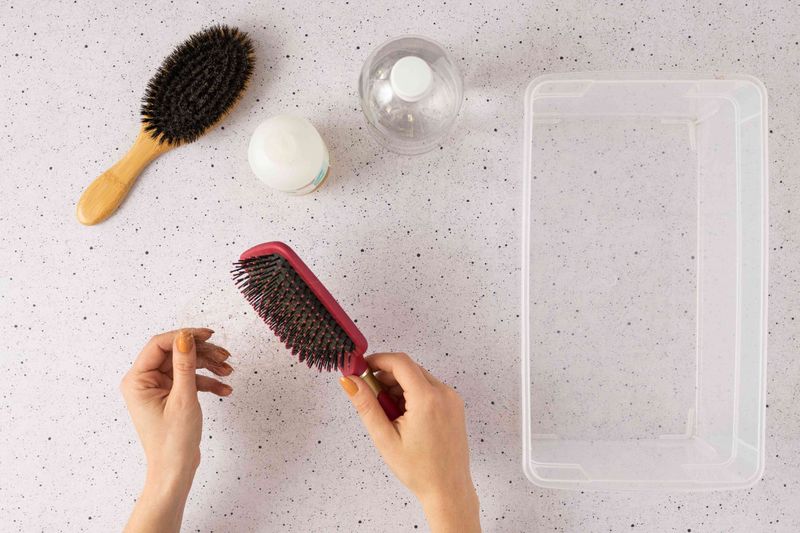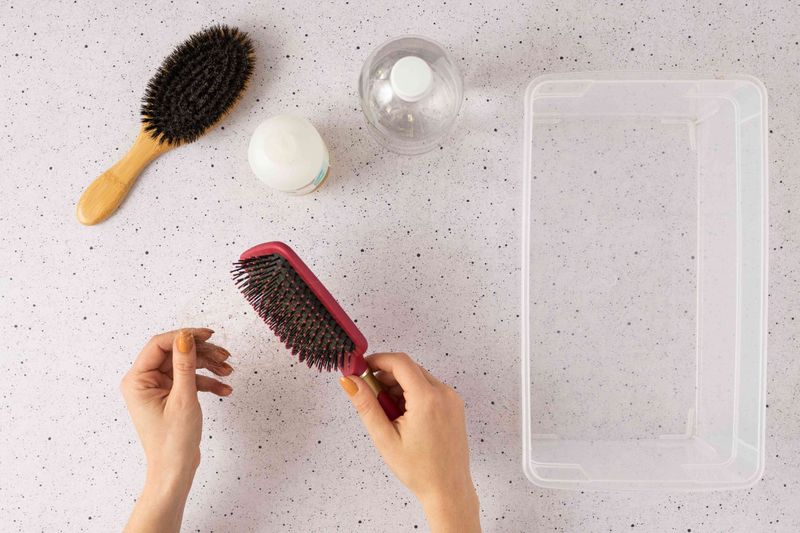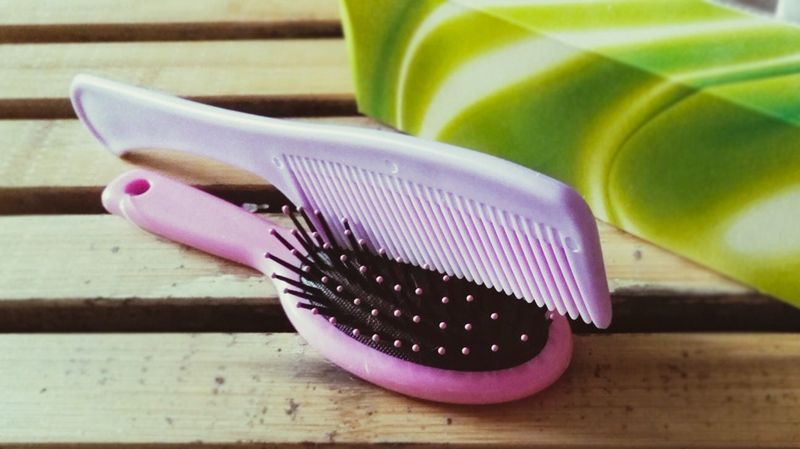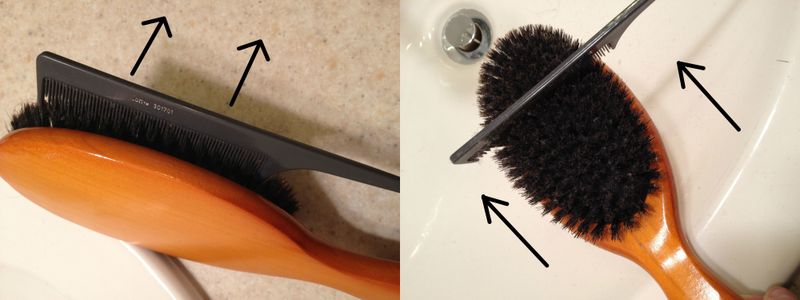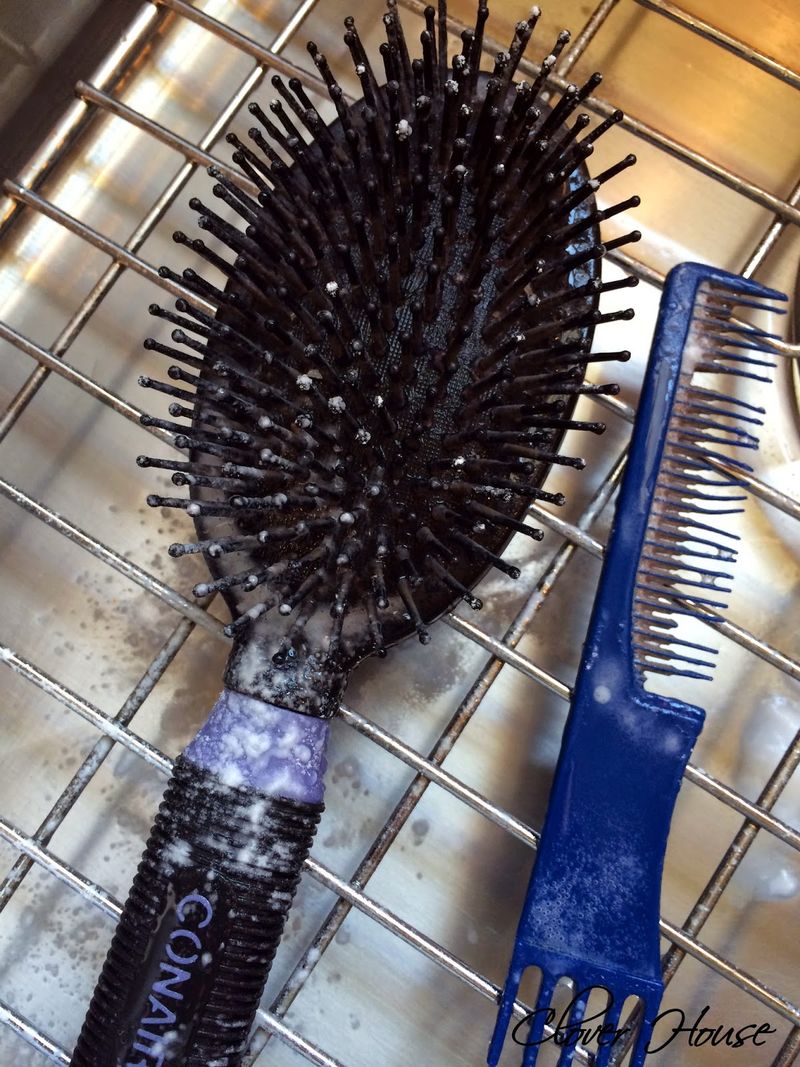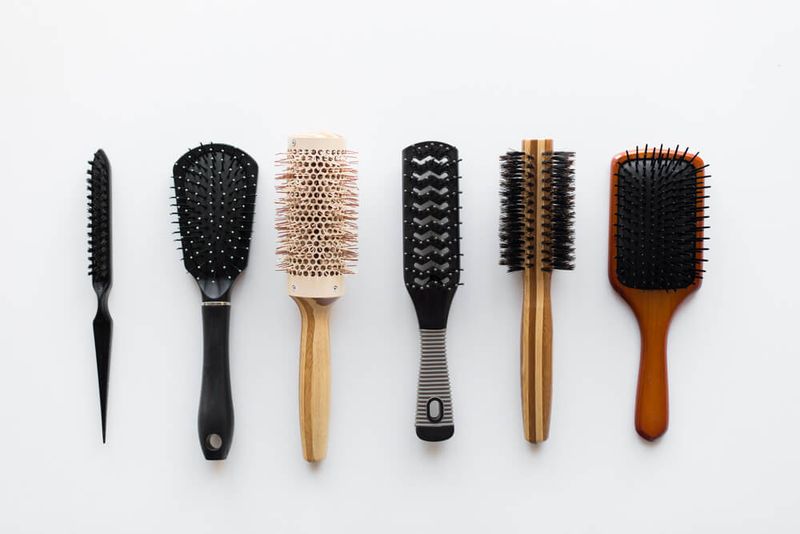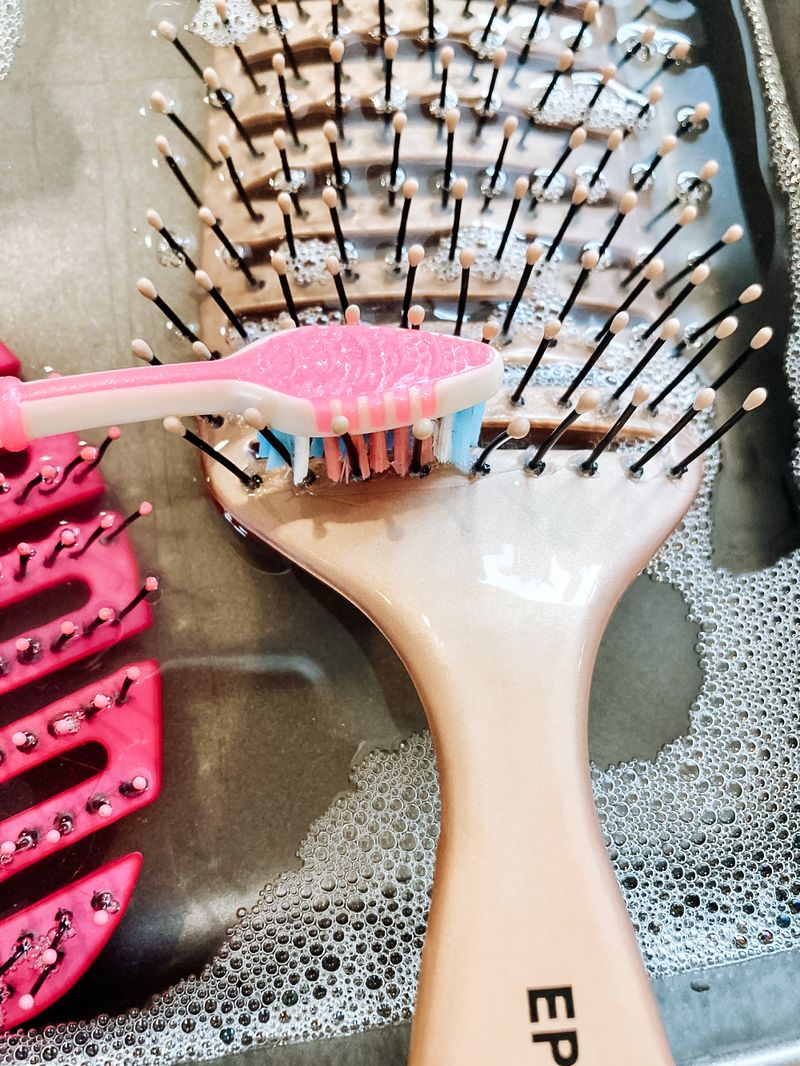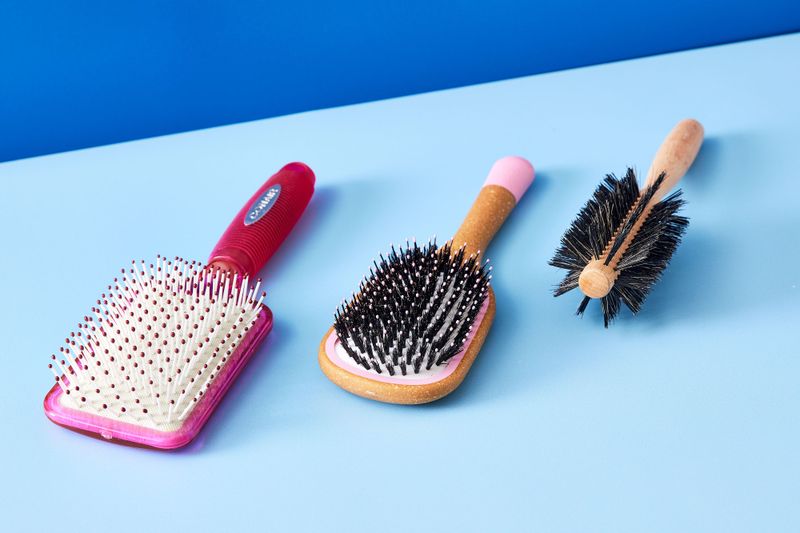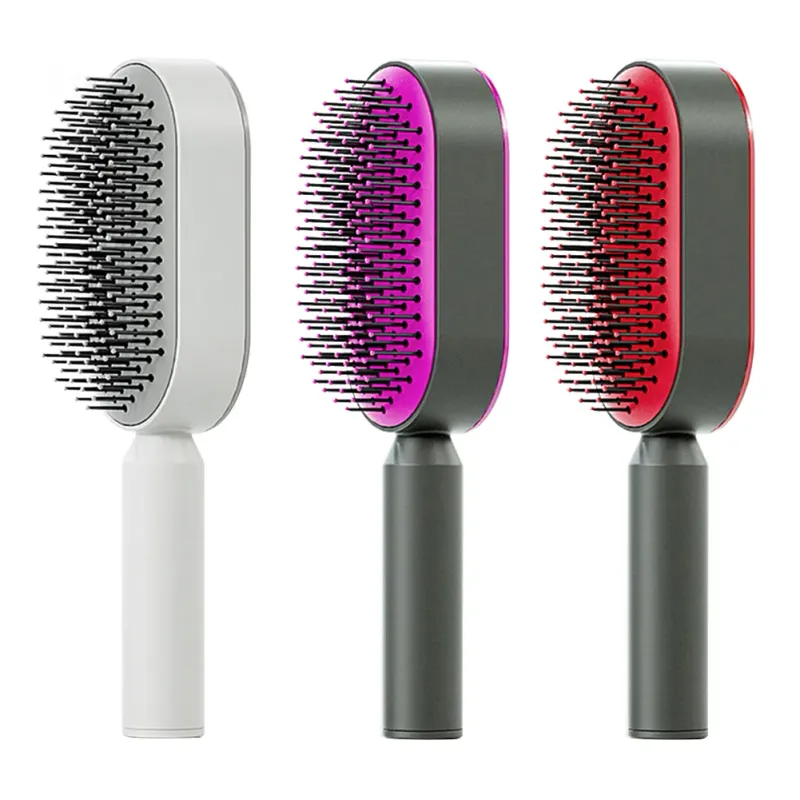Clean hairbrushes and combs are essential for healthy hair and scalp. Product buildup, dead skin cells, and oils collect on these tools over time, transferring back to your hair when you use them. Regular cleaning not only extends the life of your brushes but also keeps your hair looking its best.
1. Remove Hair First
Start by pulling out tangled hair with your fingers. For stubborn strands, use a toothpick or scissors to lift them away from the bristles. This prep step makes the actual washing much more effective.
2. Soak in Warm Soapy Water
Fill a bowl with warm water and add a teaspoon of gentle shampoo. Wooden brushes should only have their bristles submerged. Let plastic brushes and combs soak for 15-20 minutes.
Related: -7 Straight-Hair Problems No One Talks About And 8 Easy Fixes That Shine
3. Baking Soda Power Cleanse
Mix two tablespoons of baking soda with warm water to create a paste. Apply to bristles and base using an old toothbrush. The mild abrasive properties lift stubborn buildup without damaging bristles.
4. Vinegar Rinse for Disinfecting
Mix equal parts white vinegar and water in a bowl. Dip your brushes and combs for 30 minutes to kill bacteria and remove mineral deposits. The vinegar smell disappears once dry.
5. Scrub Between Bristles
Use a cleaning brush or old toothbrush to scrub between bristles. Work in circular motions to dislodge product buildup, dead skin cells, and oils. Pay extra attention to the base area.
6. Special Care for Wooden Brushes
Never submerge wooden brushes fully. Clean bristles with a damp cloth and mild soap. Wipe the wooden handle with a separate cloth, then apply a tiny amount of olive oil to prevent drying.
7. Tackle Lint Buildup
For brushes with lint trapped deep in bristles, use tweezers to grab and pull out stubborn fuzz. A fine-tooth comb can also be dragged through bristles to collect lint in one sweep.
8. Steam Clean for Deep Sanitation
Hold brushes over steaming water for 30 seconds to loosen grime. This method works wonders for plastic brushes and combs. The heat helps kill germs while loosening stubborn residue.
9. Tea Tree Oil Treatment
Add five drops of tea tree oil to your cleaning solution for antimicrobial benefits. This natural disinfectant fights fungus and bacteria while leaving a fresh scent. Perfect for brushes used on oily hair.
10. Dry Brushes Properly
Place brushes bristle-side down on a clean towel to dry. This prevents water from seeping into the base and causing damage. Never use a hairdryer as heat can warp plastic or damage natural bristles.
11. Denture Tablets for Plastic Combs
Drop two denture cleaning tablets into warm water and soak plastic combs for one hour. The effervescent action removes buildup in teeth while sanitizing. Rinse thoroughly before using on hair again.
12. UV Sanitizing Boxes
Consider investing in a UV sanitizing box for professional-level cleanliness. These devices use ultraviolet light to kill 99.9% of germs in minutes. Ideal for frequently used brushes or shared household tools.
13. Clean Brushes Weekly
Establish a regular cleaning schedule based on usage. Daily-use brushes need weekly cleaning. Those used with styling products require more frequent attention. Set a reminder on your phone to maintain this habit.
14. Ammonia Solution for Tough Buildup
For extremely dirty brushes, mix one tablespoon of household ammonia with two cups of water. Soak plastic tools for 10 minutes only. Rinse thoroughly and air dry. Use in well-ventilated areas.
15. Lemon Juice Brightening Treatment
Restore yellowed bristles by soaking in lemon juice and sunlight. The natural bleaching action brightens discolored plastic. Mix half lemon juice, half water and leave brushes in direct sun for an hour.
16. Rubbing Alcohol for Quick Sanitizing
For between-deep-cleanings maintenance, spray bristles with 70% isopropyl alcohol. Let sit for 5 minutes, then wipe excess with a clean cloth. This quick method kills germs without full washing.
17. Boiling Water Method for Combs
Plastic and metal combs can be sanitized by boiling for 5-10 minutes. Add a tablespoon of white vinegar to the water for extra cleaning power. Let cool completely before handling to avoid burns.
18. Enzyme Cleaners for Protein Buildup
Hair products contain proteins that build up on tools. Use enzyme-based cleaners (like those for contact lenses) to break down this residue. Soak for 2 hours, then rinse thoroughly with clean water.
19. Separate Brushes by Function
Keep styling brushes separate from everyday brushes. Those used with heat or products need more frequent cleaning. Color application brushes should be cleaned immediately after use to prevent staining.
20. Compressed Air for Paddle Brushes
Use canned compressed air to blast out debris from vented paddle brushes. This works especially well for removing dust and hair product residue from the air holes and base of the brush.

